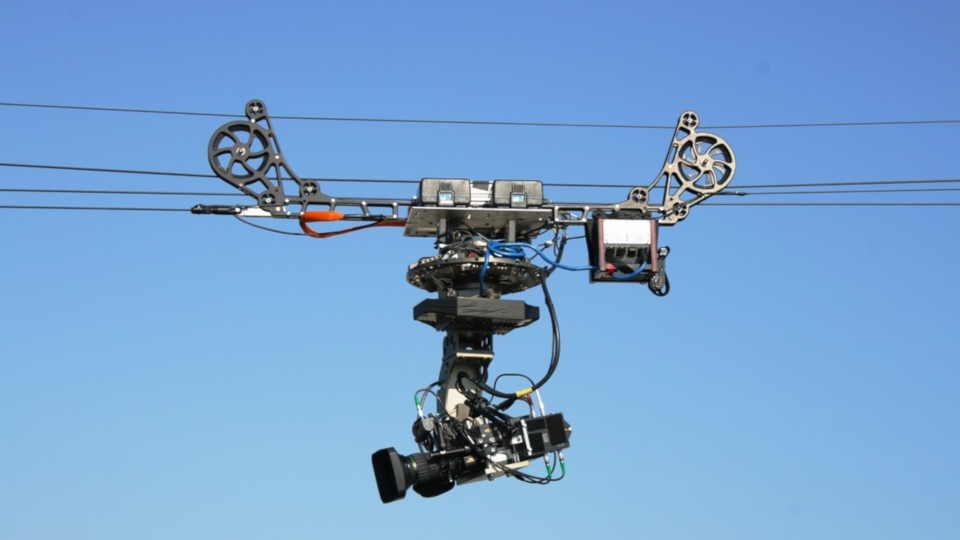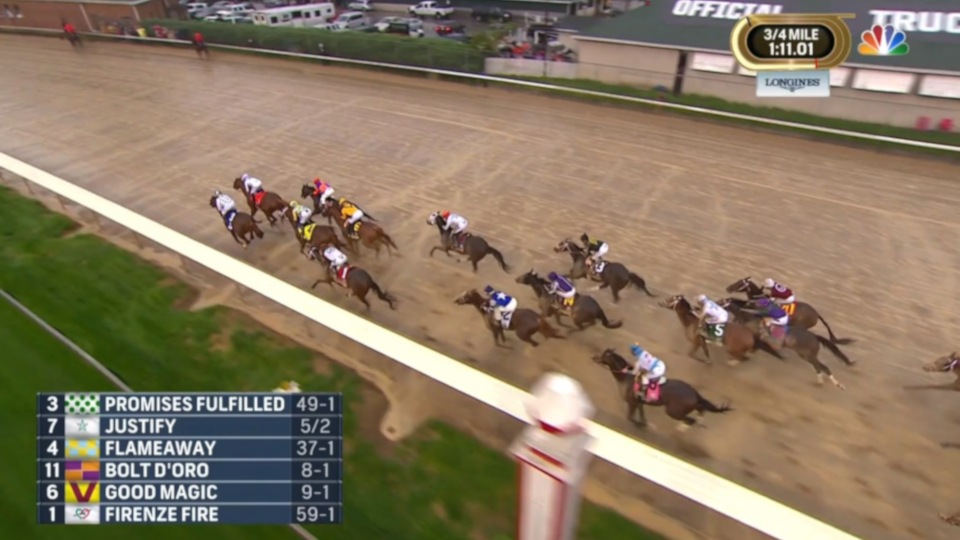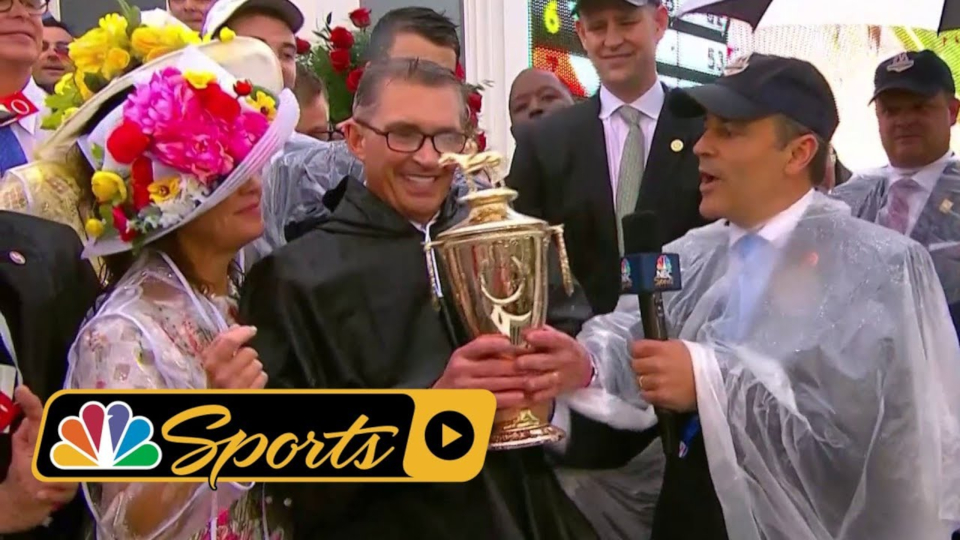NBC’s Kentucky Derby Coverage Shines Despite Soggy Conditions
CHURCHILL DOWNS, Ky.—The 144th running of the Kentucky Derby on May 5 was the wettest derby in the event’s history. By the time the field of three year-old thoroughbreds (including race winner Justify) thundered down the legendary Churchill Downs track, more than 2.8 inches of rain had fallen at nearby Louisville Airport, breaking the previous Louisville May 5th rainfall record of 2.31 inches, which had stood since 1918.

For NBC Sports, whose Kentucky Derby coverage capped three days of horse racing on NBC and NBCSN, the working conditions were extremely difficult. The relentless heavy rain turned the Churchill Downs track into muddy, sloppy muck that splashed skywards wherever the horses ran (sheets of mud spray can be seen in the Derby race video) while drenching crews and equipment. Granted, NBC Sports had weatherproofed cameras and operator positions before the race, but the rain still made life tough for personnel to work outside.
“Just to try to keep 52 cameras up in rainy weather that continued all day was a feat in itself.” —John Roche, NEP
“It was a miserable, miserable day, all day,” said John Roche, senior technical manager for NEP, which provided the mobile units and related equipment to NBC. “Just to try to keep 52 cameras up in rainy weather that continued all day was a feat in itself.”
Despite the damp weather, NBC Sports was able to break new ground with a never-before seen camera angle on the track’s distance back stretch, thanks to “BatCam.” “It was a true innovation at the derby,” said Tim DeKime, vice president of sports operations for NBC Sports.
FROM NASCAR TO REAL HORSE POWER
Initially used by NBC Sports to cover high-speed NASCAR races, BatCam is a cable -supported, self-powered moving Panasonic AK-HC1500G HD box camera that goes from 0 to 60 mph in 1.5 seconds; reaching speeds in excess of 100 mph. BatCam’s combination of quick acceleration, high speed, and unobstructed suspended camera angle made it well-suited to cover Churchill Downs’ back stretch. (Top horse speeds at the derby typically hover around the 40 mph mark.)
The professional video industry's #1 source for news, trends and product and tech information. Sign up below.
[Read: Fox Sports Adds High Speed Rail Cam to Coca-Cola 600 Live Coverage]
The decision to use BatCam came after long discussions between NBC Sports and Churchill Downs managers. “Our producers’ desire was to get a different shot of the back stretch that we’ve not seen before,” said DeKime. Eventually, everyone opted for the high-speed BatCam after considering “various types of camera systems,” because none of the others were fast enough to keep up with the horses while providing consistent, smooth video.

To use BatCam at the Kentucky Derby, two 80-foot reticulated arm lift trucks with 10-foot extension trusses were positioned inside the track’s second and third turns respectively. Next, a high-tension cable measuring 2,200 feet was suspended between them at a height of 90 feet above ground. BatCam — with its remotely-controlled Panasonic AK-HC1500G HD “camera car” unit — was then mounted on the cable.
The result was a smooth, extremely clear overhead camera view of the Churchill Downs’ back stretch from end to end. (It can be seen in this NBC Sports clip of the race.)
“You could see the race from a spectator’s point of view,” said Roche. “You were travelling side-by-side with the horses as they ran along the back stretch.”
CAMERAS & OTHER CONSIDERATIONS
In addition to BatCam, NBC Sports had 52 HD cameras positioned around the Churchill Downs course. “We used 27 Sony HDC-2500 cameras — including six handhelds connected wirelessly by BSI RF equipment — eight HDC-4300s, and one HDC-4800 4K camera for the finish line,” said Keith Kice, NBC Sports’ senior technical manager. “We ran the 4800 at four times speed and were able to do the digital zoom on the camera [to take a closer look at the finishers while delivering 1080p video resolution].”
For the Kentucky Derby — which averaged 15 million viewers this year — NBC Sports thought it worthwhile to add a 4K camera to the production.

“If our budget has the room, we use 4K where we can,” said DeKime. “4K lends itself to the finish line camera, and we’ll use it on various other horse races. If the Belmont becomes a Triple Crown contender, I can promise you that we’ll have 4K on the finish line as well.” [This issue went to press prior to the race.] He noted that the Sony HDC-4300s can be upgraded to 4K if required, allowing NBC Sports to scale up 4K resolution if need be.
As for the mobile production trucks NBC Sports used NEP’s ND1s A, B, C and D units for the main NBC network show, according to Kice. “Earlier in the day, when we were on NBCSN, we used NEP’s SS-15. We also had a mobile unit there from BSI that provided all of our RF audio and video for the show.”
Laying out all 52 cameras, and connecting them back to the production trucks (by fiber-optic cable or RF), was a major challenge for NBC Sports due to Churchill Downs’ sheer size. “It’s about a mile around,” Kice said. “Getting everything in place, connected, and checked out on schedule made for a very full three days.”
Despite all the factors NBC Sports had to deal with, everything went as planned for derby fans.
“The weather was pretty horrible, and it put a damper on everything; no pun intended,” said DeKime. “But for as much rain as we got, during what was probably the wettest Kentucky Derby ever, we had very few problems. One of the cables got fried due to water near the end of the day, but overall it was technically a pretty good day for everybody despite the circumstances.”
James Careless is an award-winning journalist who has written for TV Technology since the 1990s. He has covered HDTV from the days of the six competing HDTV formats that led to the 1993 Grand Alliance, and onwards through ATSC 3.0 and OTT. He also writes for Radio World, along with other publications in aerospace, defense, public safety, streaming media, plus the amusement park industry for something different.

